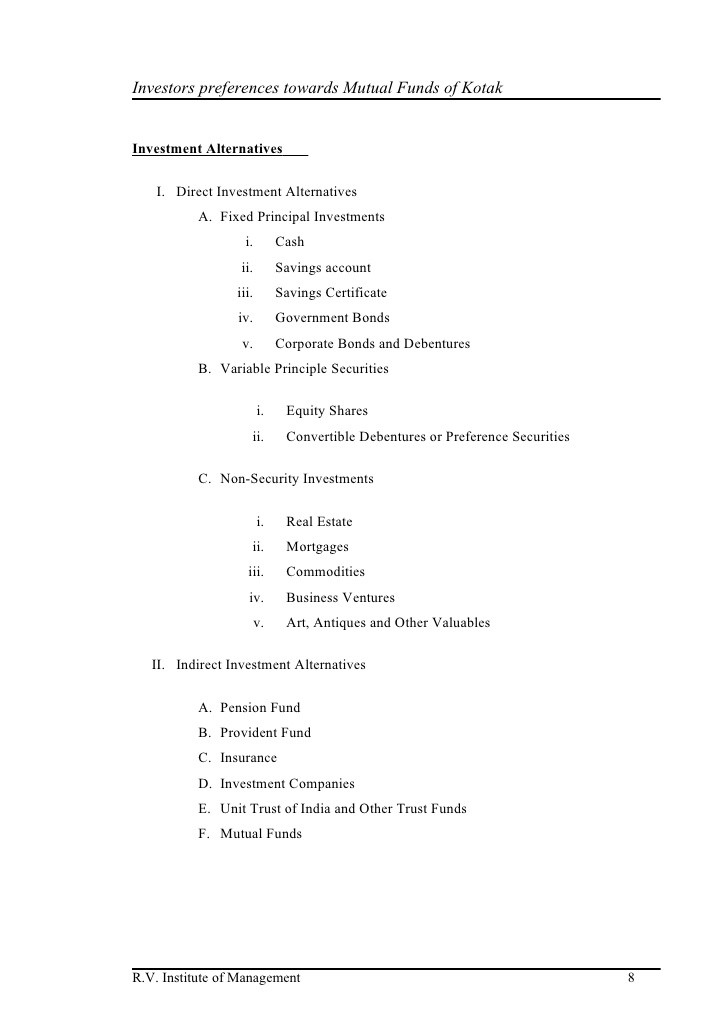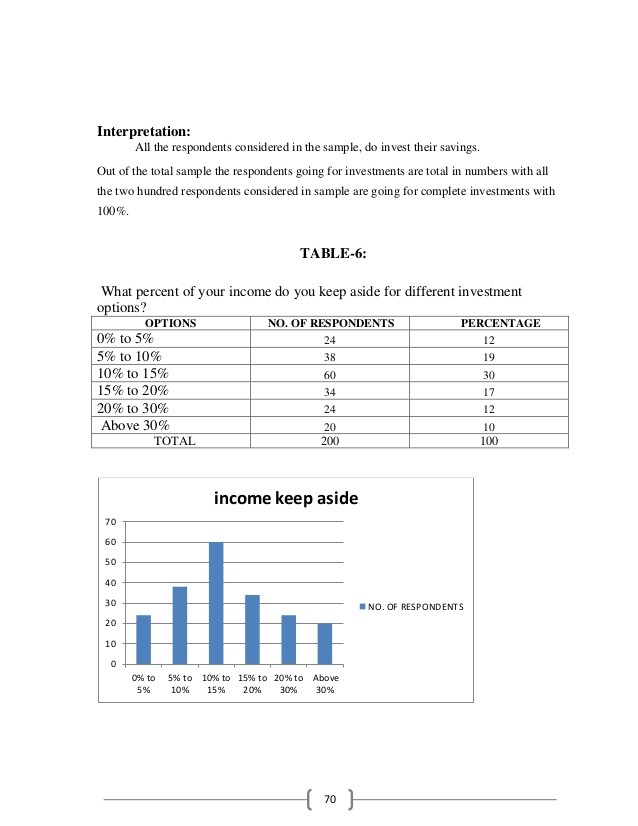Analyzing Investors Attitude Towards Mutual Funds As an Investment Option Vo 7 July
Post on: 14 Апрель, 2015 No Comment

Analyzing Investors' Attitude Towards Mutual Funds As an Investment Option
FREE EXCERPT
Introduction
It is said that ‘necessity is the mother of invention’. Innovation has always been the spirit of human nature. In the financial sector also, several new instruments have been innovated in tune with market needs. The constraints of banks to provide growth with market yields for the investors’ section of society has given birth to one more new instrument, the mutual fund.
Mutual fund is a trust that pools the savings of a number of investors who share a common financial goal. The money collected is then invested in the capital market instruments such as shares, debentures and other securities. The income earned through these investments and the capital appreciation realized are shared by its unitholders in proportion to the number of units owned by them. The parties involved in mutual funds are unitholders, sponsors, trustees, asset management company, custodian, etc. and this is regulated by the Securities Exchange Board of India (SEBI).
During the last few years, the mutual fund industry has emerged as the most dynamic segment in the Indian financial system. The reforms of economy, industrial policy, public sector and financial sector; and the opening of the economy have been the main reasons for the tremendous growth of the Indian capital market. The Indian mutual fund industry came into existence in 1963 as a part of development in the capital market and to help small investors. In the last few years, the mutual fund industry has gained momentum and has become an important and dynamic sector of the capital market.
Till 1987, UTI was the only mutual fund with Rs. 6,700 cr as total assets under management. The industry witnessed an unprecedented level of growth with the entry of mutual funds sponsored by nationalized banks and insurance companies in 1987. By the end of 1992-1993, the funds under management rose to nearly Rs. 48,000 cr. The mutual fund activity gained momentum in 1993 with the opening of the industry to private sector fund operators and consequently by 1995, the total assets under management of the industry crossed Rs. 72,000 cr. Between August 2005 and August 2006, assets under management of mutual funds in India grew 57% to over Rs. 3 lakh cr. As a percentage of GDP, the assets under management of funds are about 9.5%, as against 60% in developed countries.
Benefits Delivered by Mutual Funds to the Investors

The major benefits delivered by mutual funds to the small investors are:
Return Potential
Over medium to long-term, mutual funds have the potential to provide a higher return as they invest in a diversified basket of selected securities.
Moreover, mutual funds take services of experienced and skilled professionals, backed by a dedicated investment research team that analyzes the performance and prospects of companies and selects suitable investments to achieve the objectives of the scheme.














